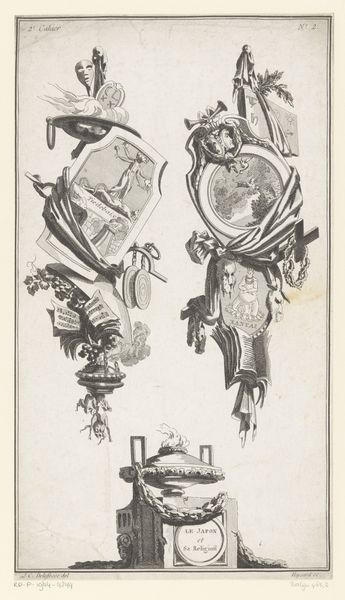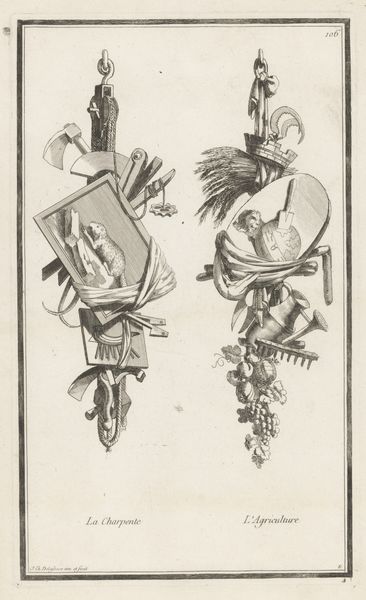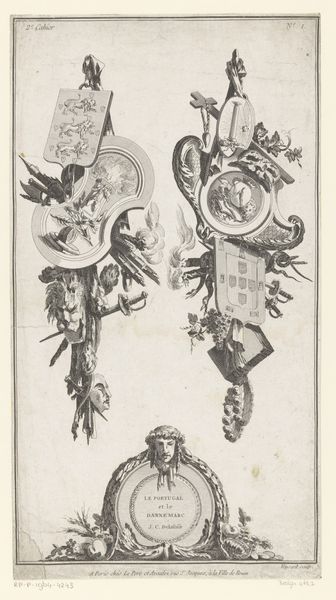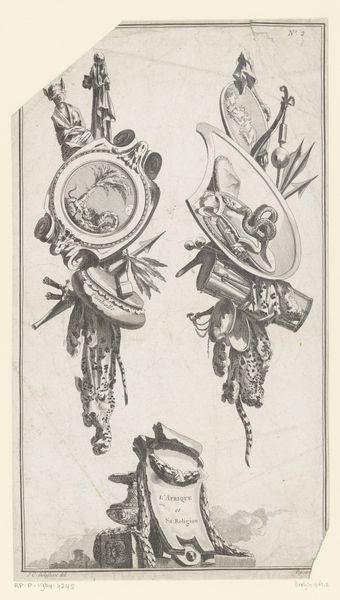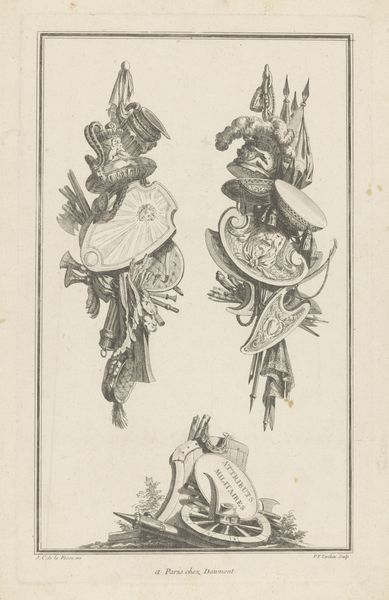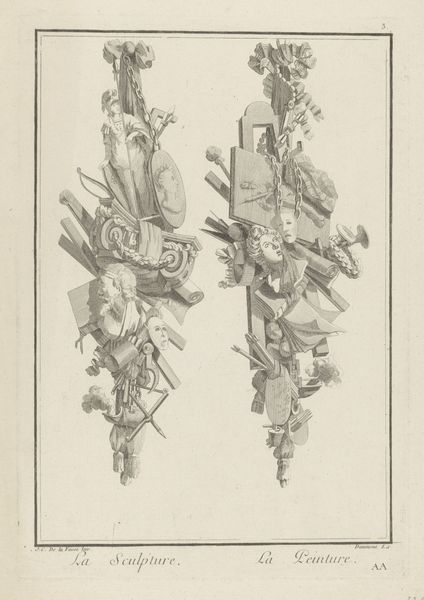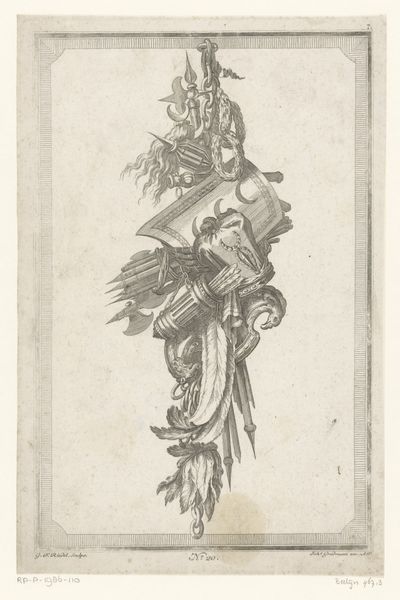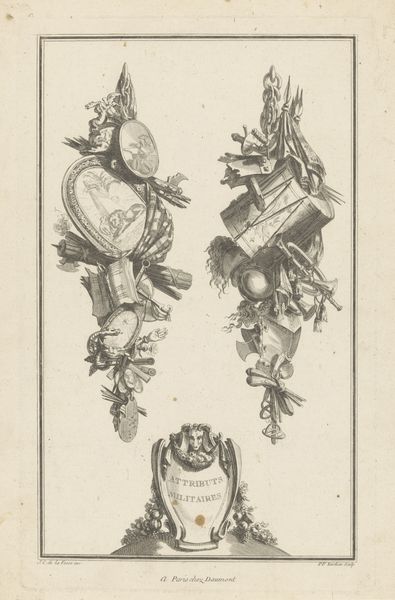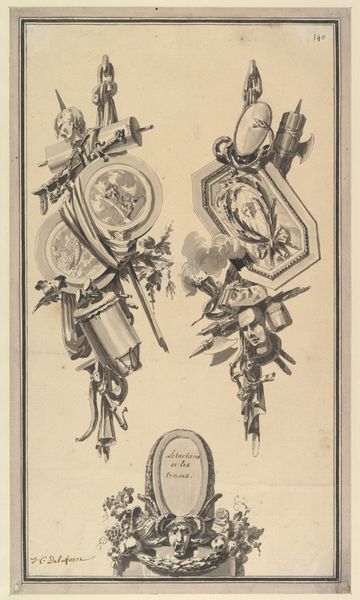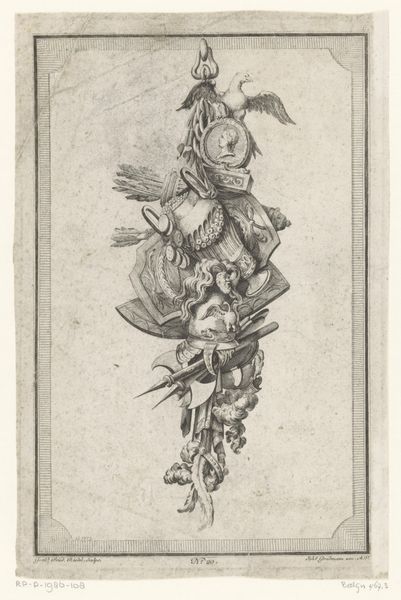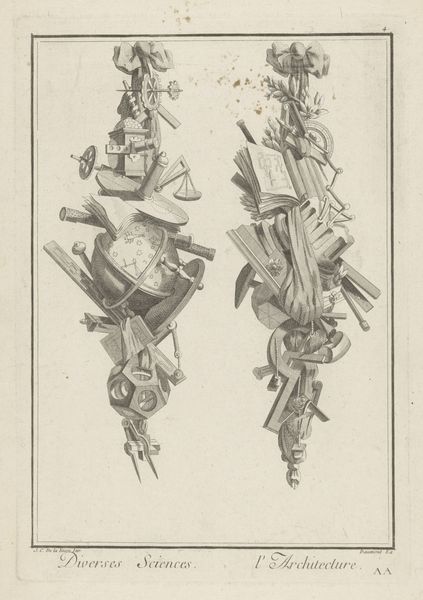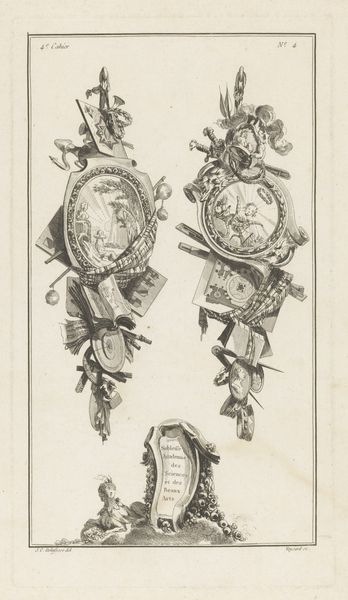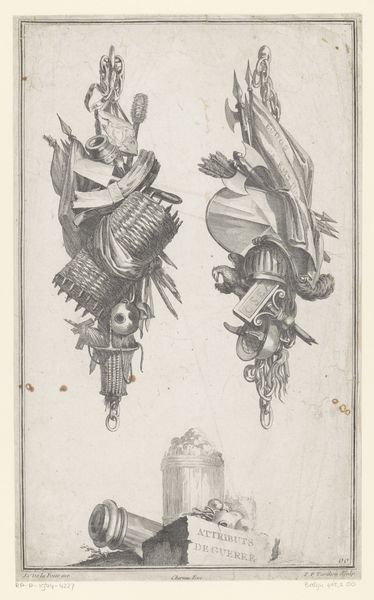
Dimensions: height 385 mm, width 217 mm
Copyright: Rijks Museum: Open Domain
Curator: This print, dating from between 1772 and 1779, is titled "Turkije", which translates to "Turkey," and was created by Etienne Claude Voysard. Editor: My first impression is that this piece appears almost like a constructed coat-of-arms, evoking both elegance and a sense of foreboding through its detailed engraving. The sharp lines certainly create an aura of mystery. Curator: Indeed. Note how Voysard utilizes emblematic representations of power and faith. The central panel reads, "La Turquie et sa Religion"—"Turkey and its Religion". Each meticulously crafted symbol, like the shield and open book, functions within a visual rhetoric. Editor: Precisely, it prompts us to delve into the social underpinnings of this era’s engagement with Ottoman culture and the representation of its power. The masks at the bottom, they read like theatrical metaphors, suggesting performances of identity. Curator: A keen observation. One could deconstruct the layers of the print, analyzing the composition into its symbolic components. Consider the symmetry versus asymmetry in the upper emblems; does that dichotomy reveal some hidden structure of binary opposition in the artist's mind? Editor: Perhaps. It is also valid to ask whether there were inherent tensions and imbalances embedded in the worldview this print espouses. What cultural biases are revealed through the choice of symbols and the mode of their depiction? Curator: These elements certainly lead to layers of intriguing analysis that transcend the merely decorative, presenting a network of conceptual juxtapositions for us to consider. The precision in the printmaking adds to its visual interest and thematic strength. Editor: Yes, beyond its graphic mastery, it acts as a document reflecting historical views on the Ottoman Empire and its religion—it captures an early cross-cultural exchange filtered through a specific European perspective. Curator: It presents an elegant formal representation that requires careful deconstruction to unveil the ideology embedded within its baroque framework. Editor: An ideology still very much in need of interrogation. Looking closely here certainly is an exercise that illuminates how representation perpetuates power dynamics even within what appears to be ornamental.
Comments
No comments
Be the first to comment and join the conversation on the ultimate creative platform.
